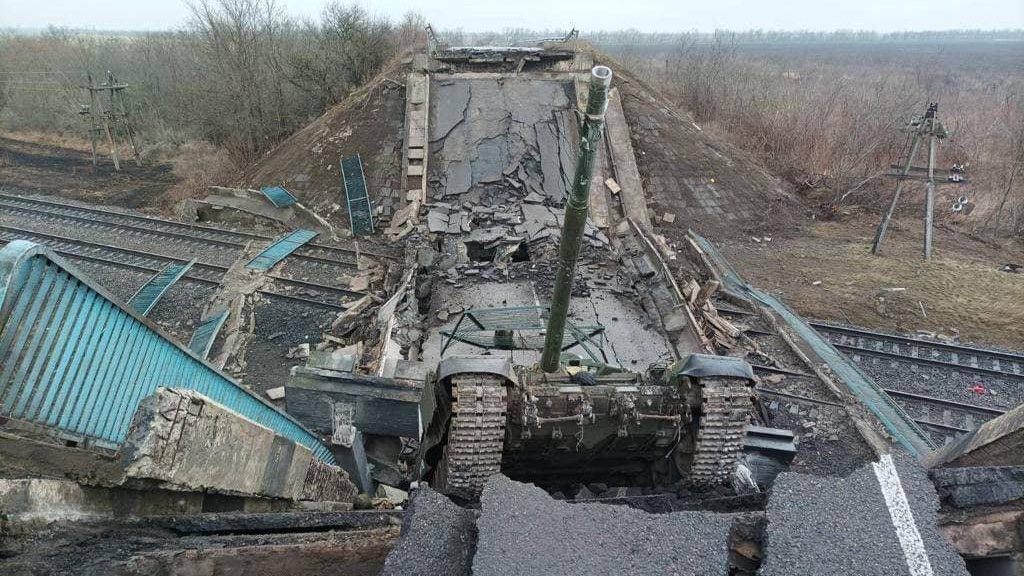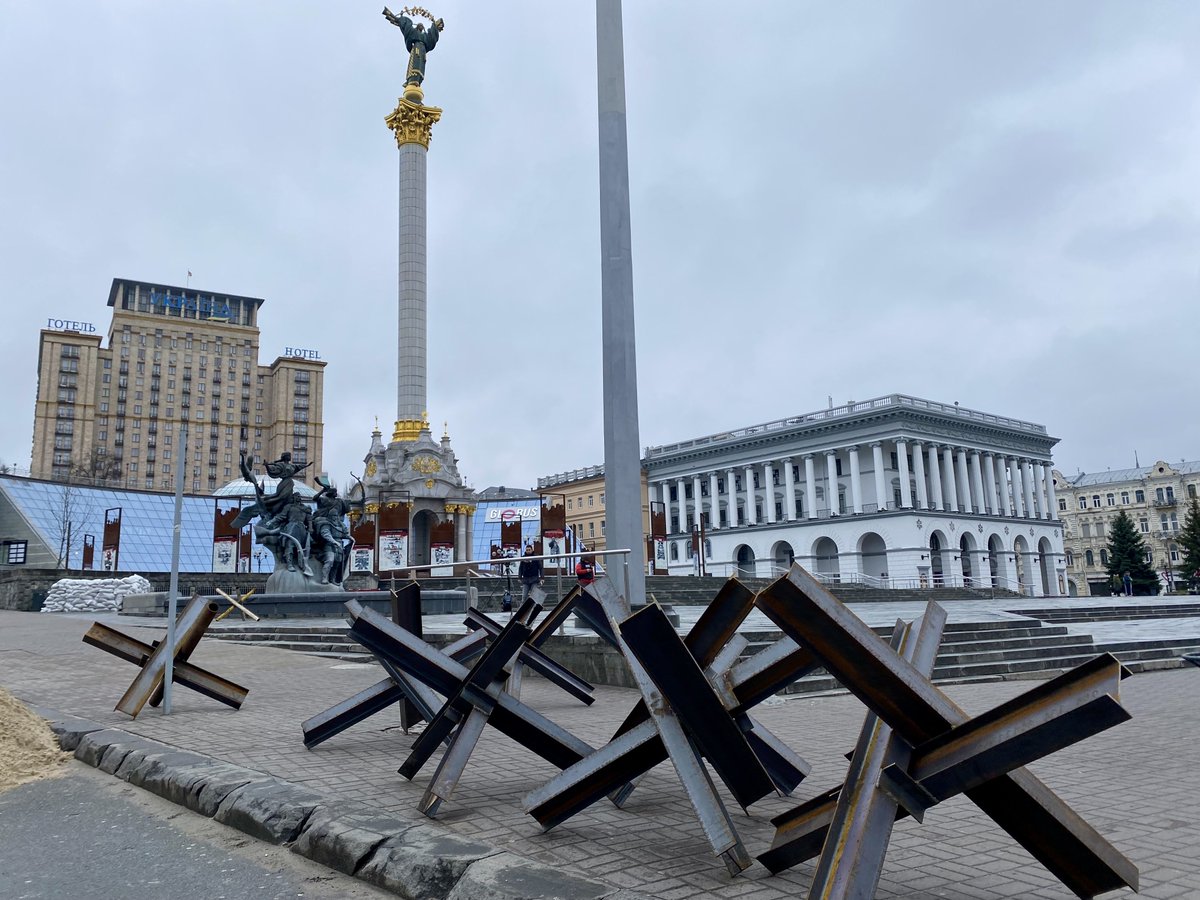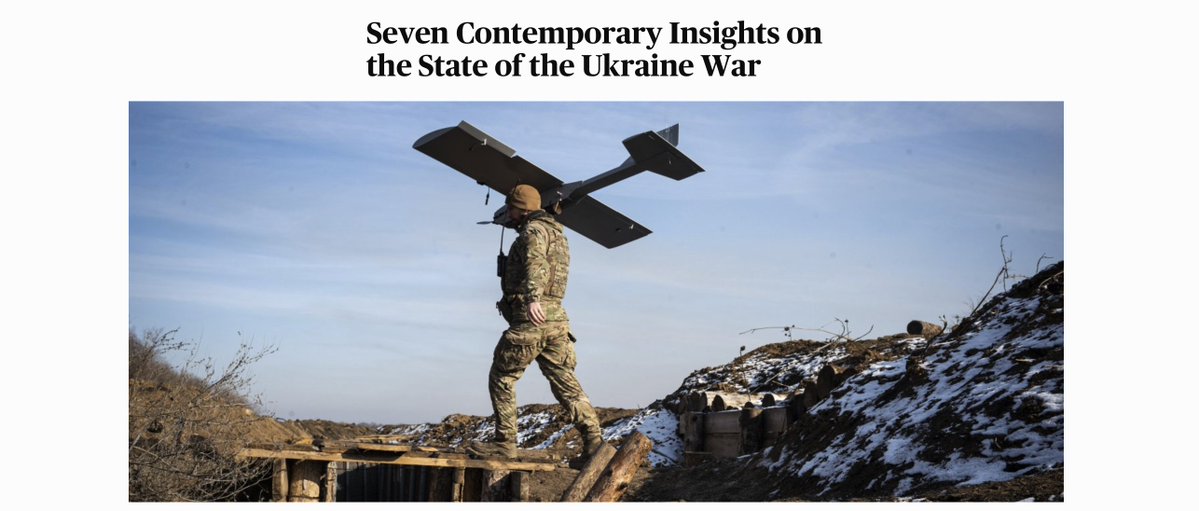Nine days since the Russian conquest of Ukraine began. The potential encirclement of Kyiv is the focus of my 9th daily thread. 1/25 (Image via @Osinttechnical) 

2/25 As always, a shout out to those reporting on the Russian invasion. This includes @KofmanMichael @maxseddon @IAPonomarenko @RALee85 @shashj @DanLamothe @ikhurshudyan @IanPannell @defenceHQ @thestudyofwar @OrlaGuerin @siobahn_ogrady @holmescnn among others. Please follow them.
4/25 Kyiv is an industrial, cultural and political centre for Ukraine. It is a transportation hub and a city of historic value.
5/25 At the same time, both the Russians and Ukrainians have assigned significant political value to Kyiv. As @spencerguard & @JaysonGeroux have written “while a city may have no initial military value, it becomes so when political value is assigned to it" mwi.usma.edu/urban-warfare-…
6/25 The ongoing defence of Kyiv is a major psychological boost for Ukraine’s soldiers and civilians. It also acts to catalyse international support for Ukraine. (Image - @IAPonomarenko). 

7/25 Denying Kyiv to the Russians frustrates them in achieving their key military and political objective in war. Holding it also buys the Ukrainians time for provision of international support to continue building up.
9/25 First, the Russians need to physically cut the city off on the ground. This will be an enormous undertaking. The city measures about 25km east to west and 35km north to south. Roughly, the Russians will need to create (at least) a 90km long cordon around the city.
10/25 In defensive operations, a battalion sized organization (what the Russians call a BTG) occupies a ‘frontage’ of about 1000 metres. This means that an effective encirclement of the city would take up the vast majority of Russian forces in Ukraine. This probably isn’t viable. 

11/25 The Russians might opt for a looser cordon around the city. But this would allow the Ukrainians to resupply the defenders, prolonging any siege by providing reinforcements to defend the city in the event of a Russian assault.
12/25 The Russians will seek to cut the city in half by destroying the Dnieper River bridges. This makes coordination and internal reinforcement difficult for the defenders. The Russians might also conduct riverine operations to prevent defenders from crossing the river. 

13/25 The Russians will need to cut the city off to prevent defenders and others from leaving. This will be the mission of the ‘inner cordon’ of any Russian encirclement.
14/25 The Russians will also need an ‘outer cordon’ to prevent supplies and reinforcements getting into the city. This is what the US Army calls a ‘perimeter defence’. It requires an integrated force of infantry, armour, engineers, artillery, air defence, EW, and logistics.
15/25 The Russians will also want to prevent journalists entering the city to report on the Russian tactics needed to secure the city. They will want to deny the world pictures of the starving citizens that a Russian siege would produce. (Image - @CNN) 

16/25 And they will not want international aid organisations getting into the city either.
(Image - @icrc)
(Image - @icrc)

17/25 The Russians will also attempt to cut off power to the city. This has a major impact on civilian morale. It prevents long term storage of food. It also restricts the kinds of communications systems that might be used.
18/25 The Russians will be desperate to destroy communications networks. This is to break down the command and control of defenders in the city. It also prevents the defenders communicating with outside military forces to coordinate resupply and reinforcements.
19/25 Importantly, if the Russians destroy the terrestrial & cellular networks in Kyiv, they may stop the Ukrainian President talking to & rallying in his people. This would have a major strategic impact for the people of Ukraine, & for the coordination of international support. 

20/25 Concurrently, the Russians will be using artillery, rockets and air dropped dumb bombs to kill defenders and break down C2. They will also hope to harass the city’s inhabitants into leaving the city so there are fewer potential defenders in the city. Image- @IAPonomarenko 

21/25 Finally they will want to deny Ukrainian air power over the city, including stopping aerial resupply. But the Russians have failed to far to dominate the skies. A Pentagon brief today notes briefed that “Ukraine has a significant majority of its aircraft still available” 

22/25 Indeed, some are speculating about whether the Russian air force is capable of what is required of it in Ukraine: rusi.org/explore-our-re…
23/25 All of this is what we could call ‘shaping operations’ by the Russians. These are the activities that are required to provide a foundation for their subsequent assault on the city. There are several different ways the Russians might do this.
24/25 How this assault might play out will be the subject of my thread tomorrow. A warning – it will be very grim. We already know that the Russian way of war has embraced the destruction of cities in Chechnya & Syria. They are using this playbook in Mariupol & other cities. 

25/25 My observations, part 9, ends. Thank you to the many followers, old and new, who have been reading and sharing these posts. I hope they have provided useful insights.
(Image - @IAPonomarenko)
(Image - @IAPonomarenko)

• • •
Missing some Tweet in this thread? You can try to
force a refresh















